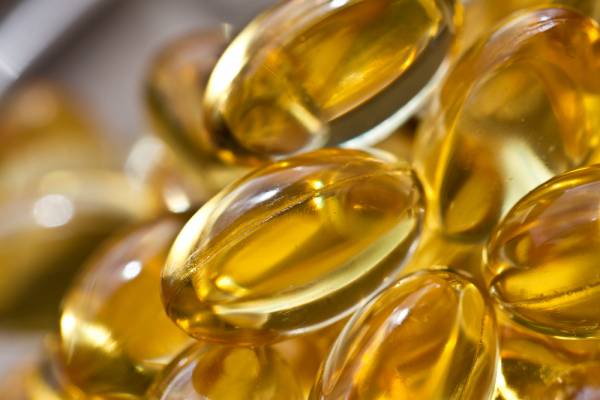I have very low vitamin D levels. Partially because of a diagnosis of celiac disease, it was something I was not aware of for a long time and has been extremely difficult to rectify. The importance of vitamin D is sometimes overlooked, but a lack of it may be the cause of issues like chronic fatigue, osteoporosis, and joint pain.
What does vitamin D do for you and how do you know if you are getting enough? Read on for an education on this substance that is so essential for a healthy body.
What Is Vitamin D?
Vitamin D is a fat-soluble vitamin stored in the body’s fatty tissue. Vitamin D’s most important functions are to promote calcium and phosphorus use and the normal growth of bone and teeth. Vitamin D is especially important in children during bone formation and a deficiency can cause the disorder rickets.
Vitamin D is not actually considered a vitamin. This is because our bodies can make it upon exposure to sunlight, specifically the ultraviolet B (UVB) rays. Also, in its active form, vitamin D is considered to be a steroid hormone (similar to testosterone and estrogen). It has hormone-like effects on mineral absorption, bone mineralization, and some secretion.
It is now known that vitamin D’s role involves more than bone health. Vitamin D is important in the prevention and treatment of some cancers, type 1 diabetes, multiple sclerosis, and cardiovascular disease. More than thirty different body tissues contain receptors for calcitriol, the active vitamin D hormone. These tissues need vitamin D for optimum health, and it appears that vitamin D deficiency is reaching epidemic proportions in the United States.
Athletic Performance and Vitamin D
Medicine and Science in Sports Exercise conducted a relatively simple study on athletic performance in regard to vitamin D. Activated vitamin D is also known as a pluripotent pleiotropic secosteriod hormone. Since vitamin D regulates more than 1,000 vitamin D-responsive human genes, it is thought that it may regulate athletic performance.
In this research review, scientists examined the world’s literature for evidence that vitamin D affects physical and athletic performance. Results from the literature examined showed that ultraviolet light improves athletic performance. Furthermore, consistent literature showed that physical and athletic performance can be seasonal. 25-hydroxy vitamin D is changed into the active form of the vitamin by the liver. Researchers discovered that performance peaks when 25-hydroxy vitamin D levels peak and declines as the 25-hydroxy vitamin D declines (think summer and winter).
Vitamin D also increases the size and number of type II, or fast twitch, muscle fibers. Most of the cross sectional studies show that 25-hydroxy vitamin D is directly associated with muscular performance in older individuals.
It can be concluded that vitamin D may improve athletic performance in those who are vitamin D deficient. Peak athletic performance may occur when the 25-hydroxy vitamin D are obtained by natural, full-body, summer sun exposure. 25-hydroxy vitamin D may also protect athletes from some acute and chronic medical conditions.

How Do I Know if I Am Vitamin D Deficient?
According to the American Journal of Clinical Nutrition, there are various symptoms that may be an indicator of vitamin D deficiency. The most obvious is muscle weakness. Low levels of vitamin D have been associated with muscle weakness, increase in body sway, and increased risk of falling.
Vitamin D deficiency can also cause a skeletal mineralization defect. As a result, patients may be at risk for osteomalacia (softening of bones), which causes bone discomfort along with aches and pains in the joints. Many times, people are misdiagnosed with conditions such as fibromyalgia, dysthymia, degenerative joint disease, arthritis, and chronic fatigue syndrome.
Before you are diagnosed with any of the above conditions, ask your primary care manager for a blood test. A simple blood sample can test for low vitamin D levels. If it turns out you have low levels, there is hope for you. There are steps you can take to combat these symptoms for a healthier lifestyle.
Sunlight
Probably the most obvious strategy is sunlight. Around twenty to 25 minutes of sunlight can help boost your vitamin D levels. Your skin pigmentation and the seasons will affect how much vitamin D you absorb. Lighter skin pigmentations let in more UVB rays than darker skin tones. In addition, the skin will not absorb vitamin D well at higher latitudes during the winter months. An easy way to get a bit of sunlight is to plan a workout outside. If your workout spans about 25 minutes, then it’s a great way to get both your sunlight and your sweat on.
Nutrition
Generally food sources for this vitamin don’t contain much, but you can still get some vitamin D from fatty fish. Great options include sea bass (not Chilean), halibut, swordfish, herring, tuna (Yellow Fin or canned), cod, sable, salmon (Pacific is best), trout, mackerel, and eel. These are all options with minimal impact to the environment. Dairy is also another source that can increase your vitamin D levels (if you are not lactose intolerant or it your diet allows it).

Supplementation
Over-the counter-vitamin D is great and easy way to increase your level. The best form of vitamin D is vitamin D3 because it’s the naturally occurring form. Make sure you follow the instruction on how much you should take. The best way to take vitamin D is with food. If you take supplementation, you need to make sure you are keeping track of your blood serum vitamin D with your primary care manager, as you can get vitamin D toxicity if you overdo it.
If you have extremely low vitamin D levels like myself, you can get prescriptions from your primary care manager for higher dosages. Usually you are prescribed around a 50,000 IU dose that you take once a week. Another form that I have found extremely useful is vitamin D3 shots. You go to your primary care manager or specialist and take one shot every two to four months.
Conclusion
Vitamin D is important to overall health. Even if you don’t think you are at risk for low levels, it’s important to have yourself tested to make sure you are within a normal range. It’s a simple blood sample and usually your results come back relatively quickly. If you find that you are not within normal levels, talk to your primary care manager about how you can increase your vitamin D in a healthy manner so you can live a healthy and fit lifestyle.
References:
1. Souberbiell, JC. “Metabolism and Effect of Vitamin D. Definition of Vitamin D Deficiency.” Biologie Aujourd’hui (2014): 55-68, accessed June 23, 2014, DOI: 10.1051/jbio/2014006
2. Cannel, J. et. al. “Athletic Performance and Vitamin D.” Medicine and Science in Sports and Exercise (2009): 1102-1110, accessed June 23, 2014, DOI: 10.1249/MSS.0b013e3181930c2b
3. Holick, M and Chen, T., “Vitamin D Deficiency: A Worldwide Problem with Health Consequences 1’2’3’4.” The American Journal of Clinical Nutrition (2008): 1080S-1086S, accessed June 23, 2014, PMID 18400738
4. Lieberman, S. PhD and Bruning, N., The Real Vitamin and Mineral Book (New York: Penguin Group, 2007), 1523-1682
5. Tate, P. Seely’s Principles of Anatomy and Physiology (New York: McGraw Hill Companies, 2012), 696-698
Photos courtesy of Shutterstock.






